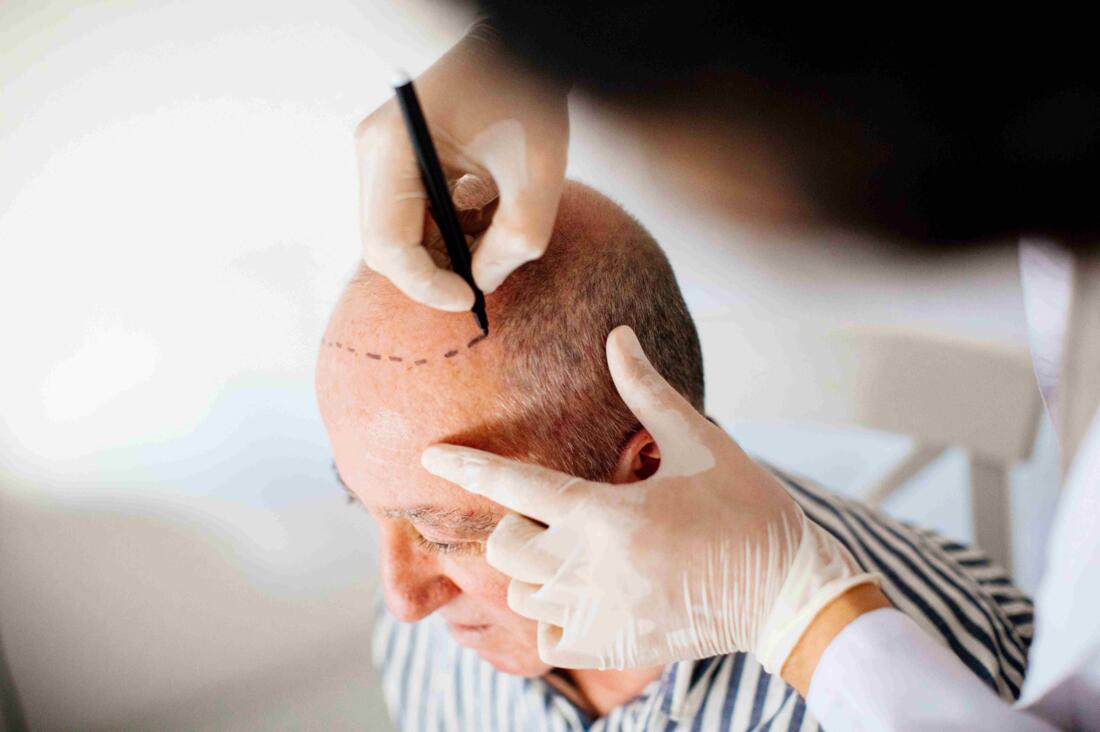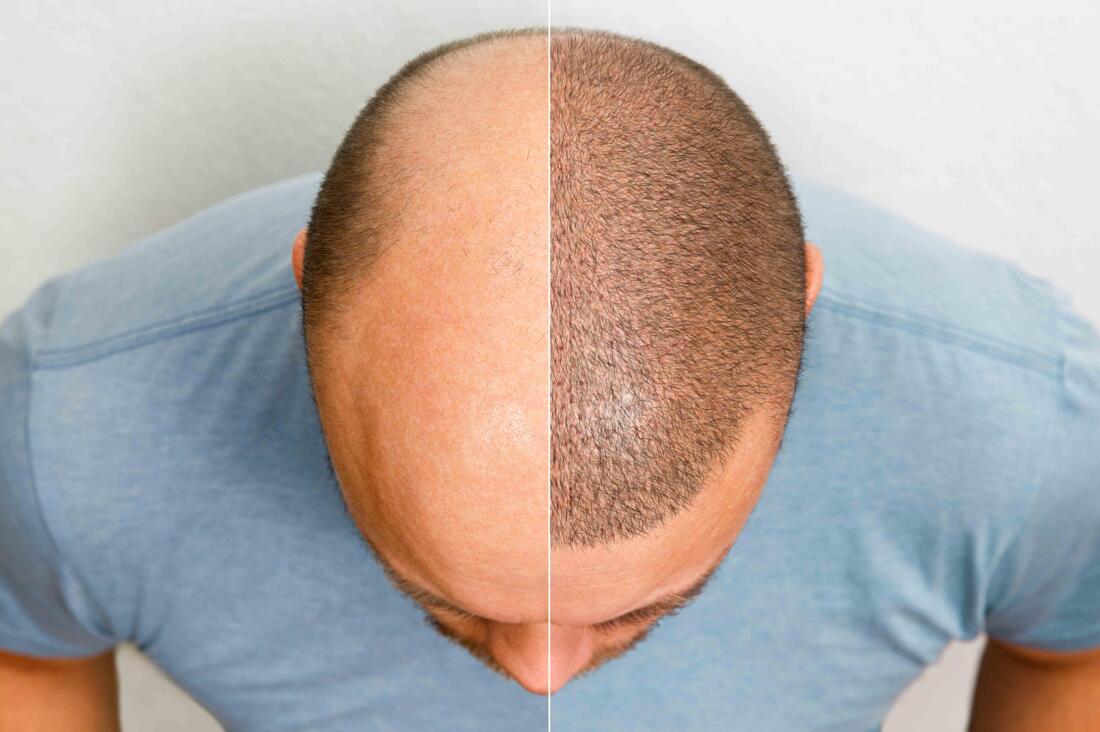Experiencing hair loss can be upsetting, impacting both the scalp and a person's self-confidence. Thankfully, advancements in hair restoration techniques provide optimism for individuals dealing with this issue.
Overcoming Hair Loss
The most advanced methods in hair transplant procedures are now more advanced and efficient than ever, delivering results that appear natural with minimal discomfort. The most popular methods include Follicular Unit Extraction (FUE) and Follicular Unit Transplantation (FUT), both offering specific benefits. These techniques focus on carefully extracting and transplanting hair follicles to ensure the new hair growth is as natural-looking as can be.

FUE Method
The FUE technique is increasingly favored for its minimally invasive approach and lack of noticeable scarring. During this method, hair follicles are taken from the scalp without a scalpel or sutures, leading to faster healing and reduced discomfort after surgery. The method's accuracy ensures that transplanted hair aligns with the natural growth pattern, blending seamlessly with existing hair. Furthermore, improvements in robotic technology have enhanced the precision and effectiveness of the FUE procedure.

FUT Method
On the flip side, FUT, or strip surgery, entails extracting a small section of tissue from the back of the scalp, where hair is less likely to thin. The follicles are then isolated and relocated to the balding spots. Despite the potential for a linear scar, this approach is usually concealed by the patient's existing hair and may present a more economical solution for those in need of numerous grafts.
Both FUE and FUT boast high success rates and can be customized to suit each patient's unique requirements and hopes.
Thanks to these advanced methods, individuals dealing with hair loss now have a better chance of attaining a full and natural-looking head of hair, which can help restore not just their locks but also their confidence.
Understanding the Causes of Hair Loss
Hair loss can occur due to various factors, including genetics, hormonal changes, medical conditions, and lifestyle choices. Androgenetic alopecia, commonly known as male or female pattern baldness, is primarily linked to genetics and hormones. Stress, poor nutrition, and certain medications can also significantly contribute to hair thinning. By understanding these causes, individuals can better address their specific hair loss issues. Consulting with a healthcare professional can help pinpoint the underlying reasons for hair loss, leading to more effective treatment options tailored to the individual's needs.
The Role of Diet in Hair Health
Nutrition plays a vital role in maintaining healthy hair. A balanced diet rich in vitamins, minerals, and proteins is essential for hair growth and overall scalp health. Nutrients such as iron, zinc, and biotin are particularly important for preventing hair loss and promoting hair strength. Foods like leafy greens, nuts, fish, and lean meats provide the necessary building blocks for hair follicles. Additionally, staying hydrated helps maintain the moisture balance in the scalp, which can prevent dryness and brittleness. Therefore, incorporating a variety of nutrient-dense foods can significantly enhance the effectiveness of hair restoration treatments.
Exploring Non-Surgical Hair Restoration Options
In addition to surgical methods, there are numerous non-surgical hair restoration options available. These include topical solutions like minoxidil, which stimulates hair growth, and oral medications such as finasteride that can slow hair loss. Additionally, laser therapy has gained popularity due to its ability to improve scalp circulation and promote hair growth. Many individuals also turn to natural remedies, such as essential oils and herbal treatments, which may enhance hair health. While these alternatives might not provide the same immediate results as surgical procedures, they can serve as effective complementary options in a comprehensive hair restoration plan.
The Importance of Post-Transplant Care
After undergoing a hair transplant, proper post-operative care is crucial for ensuring the best results. Patients are typically advised to avoid strenuous activities and direct sun exposure for a few weeks following the procedure. Following the surgeon's instructions for shampooing, moisturizing, and avoiding scratching or pulling on the scalp can significantly influence the healing process. Additionally, attending follow-up appointments allows for monitoring of the transplanted hair's growth and overall health. Understanding the recovery timeline and setting realistic expectations is important, as optimal results can take several months to fully manifest.
Psychological Impact of Hair Loss
The psychological effects of hair loss can be profound, often leading to feelings of self-consciousness and decreased self-esteem. For many individuals, hair is closely tied to their identity, and its loss can result in emotional distress. Studies have shown that people experiencing hair loss may suffer from anxiety and depression, significantly affecting their quality of life. Support groups, counseling, or therapy can be beneficial for those struggling with these feelings. Understanding that they are not alone in their experiences can encourage individuals to seek help and explore various options available for hair restoration.
Future Trends in Hair Restoration Technologies
The field of hair restoration is continuously evolving, with new technologies and techniques being developed to enhance results. Future trends may include advancements in stem cell therapy, which has the potential to regenerate hair follicles and promote natural hair growth without invasive procedures. Additionally, 3D printing technology could revolutionize hair grafting methods, allowing for more precise and personalized treatments. Researchers are also exploring genetic therapies that could address the root causes of hair loss at a cellular level. As these innovations emerge, they promise to provide even more effective solutions for individuals seeking to restore their hair.
AI-Assisted Content Disclaimer
This article was created with AI assistance and reviewed by a human for accuracy and clarity.